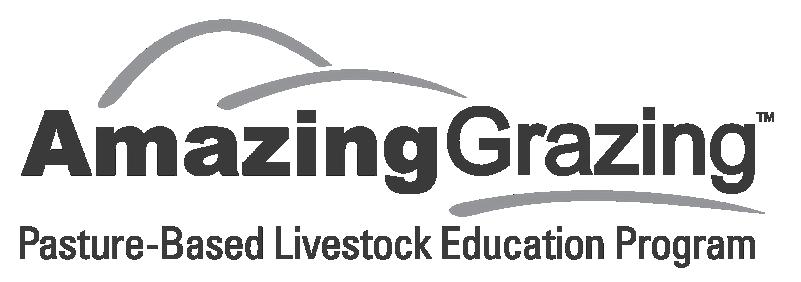
5 minute read
by Dr. Matt Poore
By DR. MATT POORE N.C. State University
Tall Fescue Pasture Renovation Made Simple

Animal performance problems related to toxic tall fescue are well documented, and there are many things that you can do to help with the problem. Changes in nutrition, fertilization, and animal genetics may all benefit animals suffering from eating fescue toxins, but nothing works like growing forage without toxins!
There are many “systems” for replacing toxic tall fescue with non-toxic forages. You can learn more about these systems on www.grasslandrenewal.com. While these systems are supported by a lot of research, I suspect the details of each “system” may paralyze some farmers. It may seem unlikely to some of you that all the steps can be implemented on time with confidence. If you are a good “planner,” then following one of the systems will work out nicely. If you are not that good a planner and find you are often late with getting stuff done, thinking you have to stick exactly to one of those systems may prevent you from doing something about toxic fescue on your farm. Remember, all of these systems have one step in common; “kill the existing stand of toxic tall fescue.” Starting with that step may be easier for some farmers than planning the whole chain of events at one time.
As you think about reducing toxic fescue problems on your farm, consider replacing old stands a bit at a time with novel endophyte tall fescue or other nontoxic forages. Start where it will be easy to use the non-toxic forage strategically for high impact animals like growing/ backgrounding calves or replacement heifers. Make a point of moving to additional land each year until you reach the right amount of non-toxic forage for you.
The point of this article is to remind readers that the key to a long term solution is to actively start doing

“DESIGNED FOR CATTLEMEN BY CATTLEMEN”

Complete Working Facilities for Cattle and Bison

Heavy, rugged construction — Built to last! National Distributor for Tru-Test Scales
Quality Equipment at Competitive Prices Call about NEW PORTABLE SYSTEMS!
For Information or Brochures, contact: Peter Hostetler 540-810-4605

This first calf heifer looks fabulous and raised a big calf grazing novel endophyte tall fescue and annuals through the spring.
something about the problem, and the critical step in all of this is to kill some toxic fescue. This can be done effectively any time of year but makes a lot of sense in the spring/early summer. Before killing the existing stand, take a hay cutting or closely graze to reduce the amount of residue that will be present. Then, let it grow out about two weeks before spraying. Tall fescue is relatively easy to kill with one quart per acre of glyphosate. Common bermudagrass, horsenettle, and white clover are harder to kill, so if they are present, use two quarts of glyphosate per acre. Then, plant a summer annual, either sorghum-sudan, sudangrass, or pearl millet. You should add a little fertilizer at planting to get the crop started, but the decaying sod will provide nitrogen to the crop through the summer. If the rain comes, you will grow a lot of good feed. Be sure you don’t graze it too soon. Wait until it is at least waist high. Remember, the idea is to use it as a smother crop and to get roots deep in the soil, and both of those require you to let the plants get some size on them.
If you are worried about using glyphosate, remember this is only short term use on the way to a perennial system that will not be using glyphosate regularly. We have had much better luck establishing the summer annual if glyphosate is used as it prevents the existing stand from competing with the new seedlings, which can be critical if the weather turns dry.
If you are fundamentally opposed to spraying, then you can still accomplish the simple goal of killing the toxic fescue stand using tillage. I don’t like tillage in general, but it is often a good first step in renovation to smooth the land and also to incorporate lime and nutrients if they are needed, so if that is what you want to do, charge ahead — plan on tilling several times to effectively kill the fescue stand.
I have worked on fescue toxicosis and pasture renovation throughout my 30 year career, but it was only ten years ago that I finally started renovating pastures at our home farm. We established novel endophyte tall fescue hay fields on old cropland, but we had not tackled the pastures. Because of my busy schedule, I was hampered by the thought of the many steps over several years that it would take for me to be successful. It was just easier for me not to do anything about the problem. I finally got started when I got into my mind one May that I wanted to kill some toxic fescue. My cows really suffer in May, so after looking at them and thinking about the problem, I just went and took it out on 20 acres of toxic pasture near our headquarters, where we make hay and graze weaned calves.
Compared to how I had approached it in the past, making that simple step was easy. We had already made first cutting hay off that field, so the time was right, and I was motivated to do something. All I had to decide to do was 1) fill the sprayer, 2) pour in the glyphosate, and 3) go spray the pasture. It took me one Saturday afternoon. Once I did that, I had two weeks to get my summer annual seed, line up the drill, and get it planted. That field never grew so much forage, and we put it to good use. Looking back, it was the best thing we ever did for the future of our farm. We like to run about 4-5 years in annuals before planting to novel endophyte tall fescue. This gives us a lot of good production, lets us completely get rid of any toxic fescue plants and seed in the field, and helps us practice our farming skills.
Having non-toxic forages for growing calves and developing heifers has changed our farm. If you are tired of watching cows suffer from toxic fescue symptoms in early summer, do something about it! Kill some toxic fescue and establish something nontoxic. It is simple, and once you start and see the results, you will not turn back.









